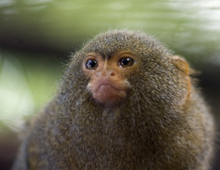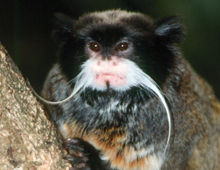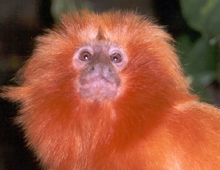
The Pied tamarin is white on its shoulders and front, with a striking dark brown back, hind part and upper tail. The fur lightens to a rust color on the lower belly, inner thighs and underside of the tail. The bald head has black skin and the large ears add to the distinguished appearance of this species.






